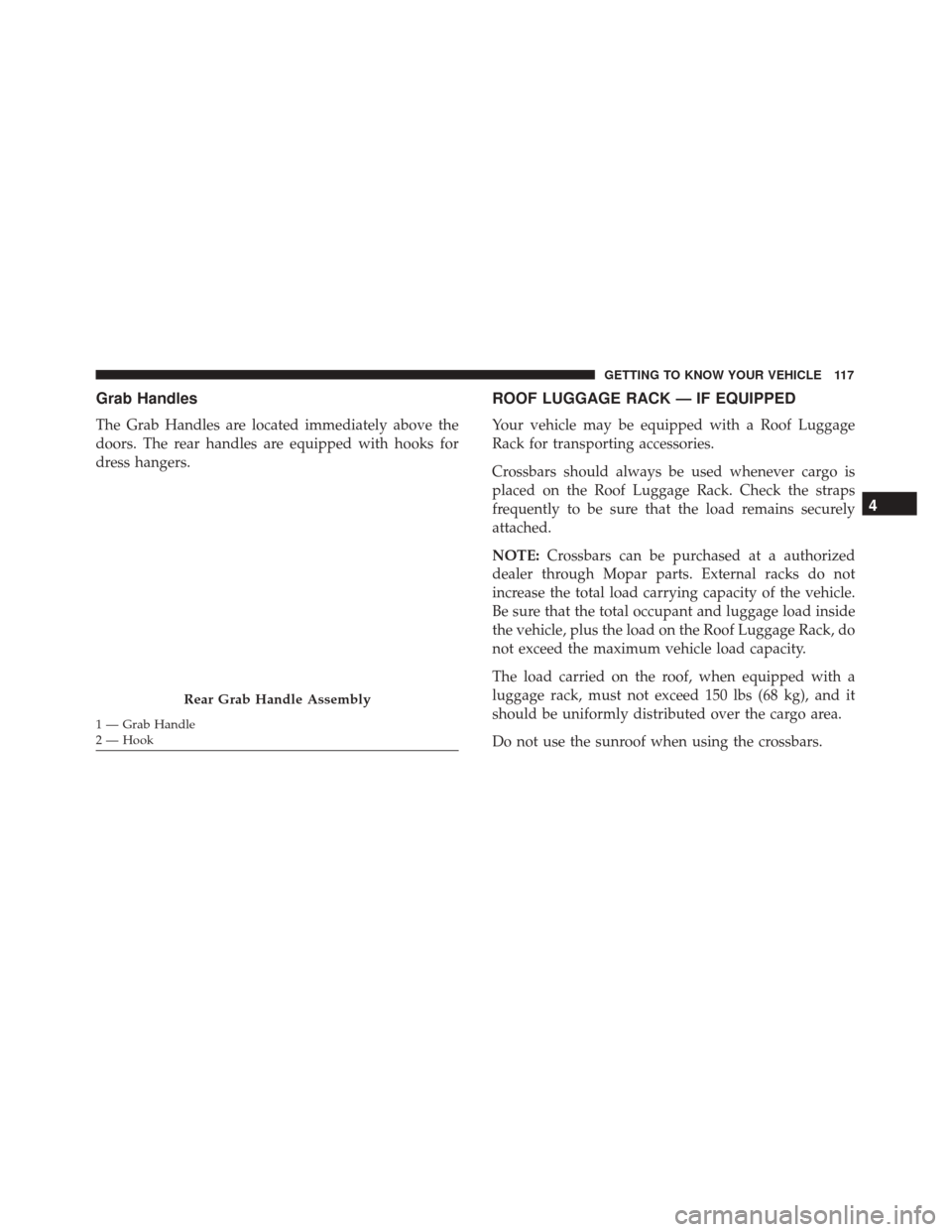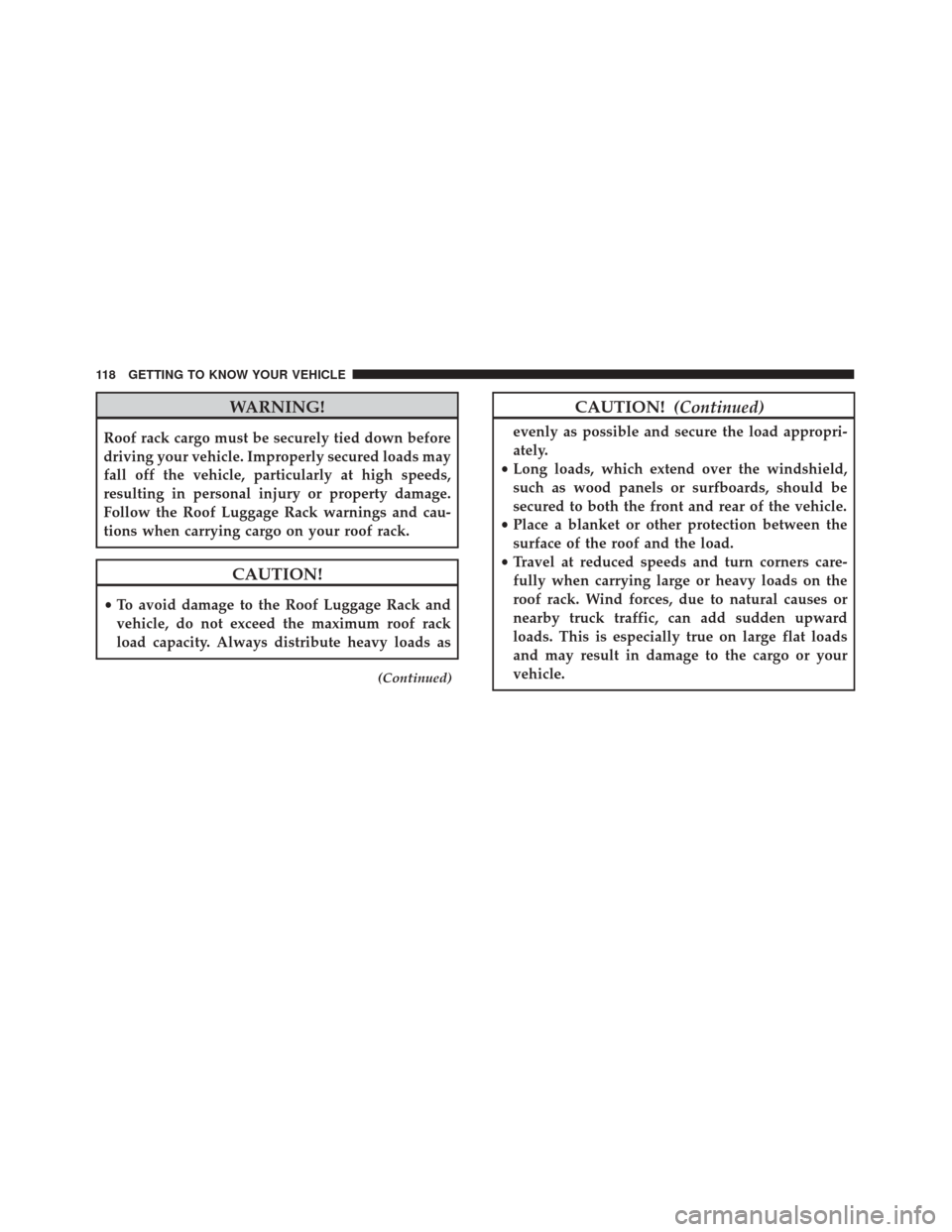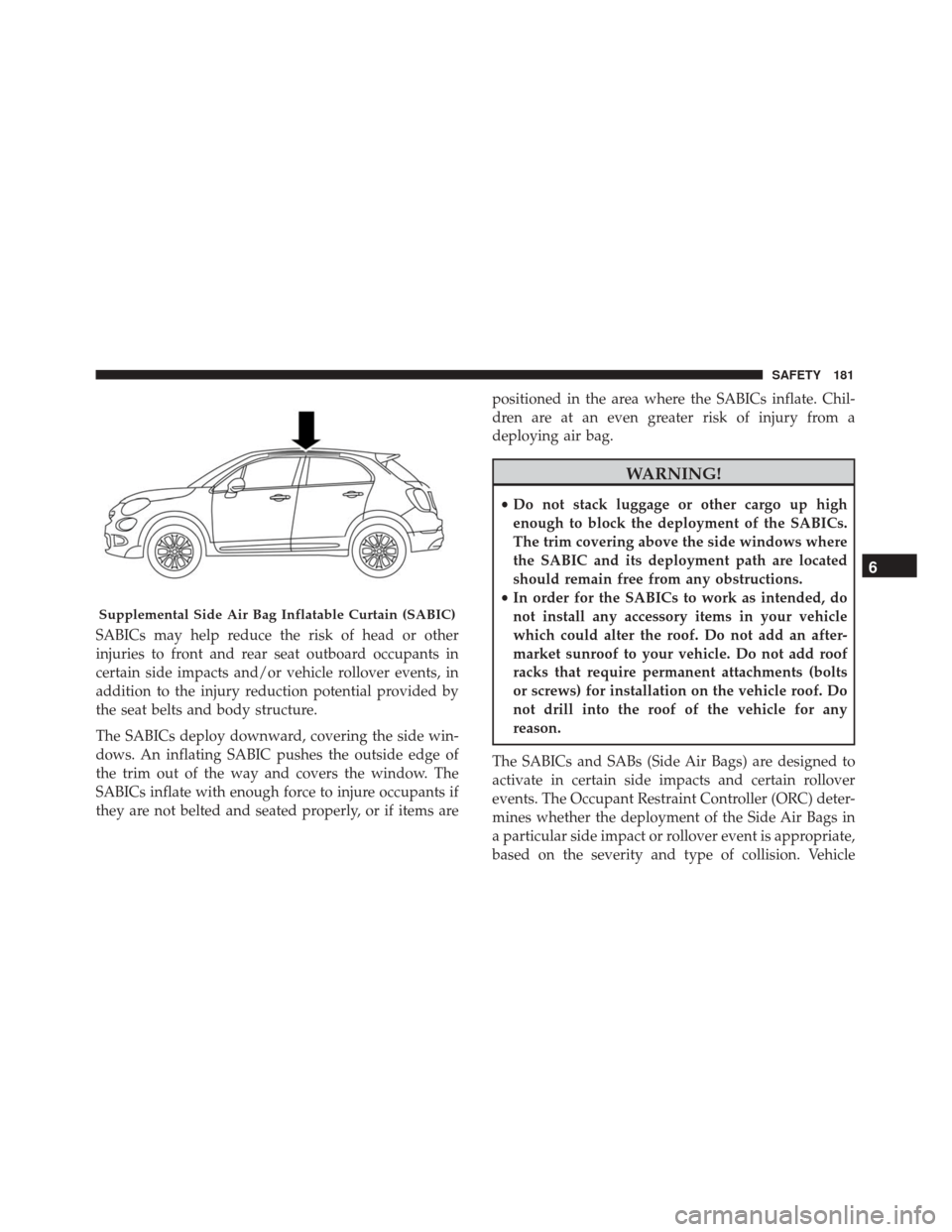Page 24 of 476
▫Cargo Area Features ..................107
� INTERNAL EQUIPMENT ................110
▫ Glove Compartments ..................110
▫ Sun Visors “Slide-On-Rod” .............111
▫ Power Outlets ......................112
▫ Cigar Lighter — If Equipped ............113▫
Ashtray — If Equipped ................115
▫ Front Armrest .......................115
▫ Cupholders ........................116
▫ Grab Handles .......................117
� ROOF LUGGAGE RACK — IF EQUIPPED . . .117
22 GETTING TO KNOW YOUR VEHICLE
Page 119 of 476

Grab Handles
The Grab Handles are located immediately above the
doors. The rear handles are equipped with hooks for
dress hangers.
ROOF LUGGAGE RACK — IF EQUIPPED
Your vehicle may be equipped with a Roof Luggage
Rack for transporting accessories.
Crossbars should always be used whenever cargo is
placed on the Roof Luggage Rack. Check the straps
frequently to be sure that the load remains securely
attached.
NOTE:Crossbars can be purchased at a authorized
dealer through Mopar parts. External racks do not
increase the total load carrying capacity of the vehicle.
Be sure that the total occupant and luggage load inside
the vehicle, plus the load on the Roof Luggage Rack, do
not exceed the maximum vehicle load capacity.
The load carried on the roof, when equipped with a
luggage rack, must not exceed 150 lbs (68 kg), and it
should be uniformly distributed over the cargo area.
Do not use the sunroof when using the crossbars.
Rear Grab Handle Assembly
1 — Grab Handle
2 — Hook
4
GETTING TO KNOW YOUR VEHICLE 117
Page 120 of 476

WARNING!
Roof rack cargo must be securely tied down before
driving your vehicle. Improperly secured loads may
fall off the vehicle, particularly at high speeds,
resulting in personal injury or property damage.
Follow the Roof Luggage Rack warnings and cau-
tions when carrying cargo on your roof rack.
CAUTION!
•To avoid damage to the Roof Luggage Rack and
vehicle, do not exceed the maximum roof rack
load capacity. Always distribute heavy loads as
(Continued)
CAUTION! (Continued)
evenly as possible and secure the load appropri-
ately.
• Long loads, which extend over the windshield,
such as wood panels or surfboards, should be
secured to both the front and rear of the vehicle.
• Place a blanket or other protection between the
surface of the roof and the load.
• Travel at reduced speeds and turn corners care-
fully when carrying large or heavy loads on the
roof rack. Wind forces, due to natural causes or
nearby truck traffic, can add sudden upward
loads. This is especially true on large flat loads
and may result in damage to the cargo or your
vehicle.
118 GETTING TO KNOW YOUR VEHICLE
Page 183 of 476

SABICs may help reduce the risk of head or other
injuries to front and rear seat outboard occupants in
certain side impacts and/or vehicle rollover events, in
addition to the injury reduction potential provided by
the seat belts and body structure.
The SABICs deploy downward, covering the side win-
dows. An inflating SABIC pushes the outside edge of
the trim out of the way and covers the window. The
SABICs inflate with enough force to injure occupants if
they are not belted and seated properly, or if items arepositioned in the area where the SABICs inflate. Chil-
dren are at an even greater risk of injury from a
deploying air bag.
WARNING!
•
Do not stack luggage or other cargo up high
enough to block the deployment of the SABICs.
The trim covering above the side windows where
the SABIC and its deployment path are located
should remain free from any obstructions.
• In order for the SABICs to work as intended, do
not install any accessory items in your vehicle
which could alter the roof. Do not add an after-
market sunroof to your vehicle. Do not add roof
racks that require permanent attachments (bolts
or screws) for installation on the vehicle roof. Do
not drill into the roof of the vehicle for any
reason.
The SABICs and SABs (Side Air Bags) are designed to
activate in certain side impacts and certain rollover
events. The Occupant Restraint Controller (ORC) deter-
mines whether the deployment of the Side Air Bags in
a particular side impact or rollover event is appropriate,
based on the severity and type of collision. Vehicle
Supplemental Side Air Bag Inflatable Curtain (SABIC)
6
SAFETY 181